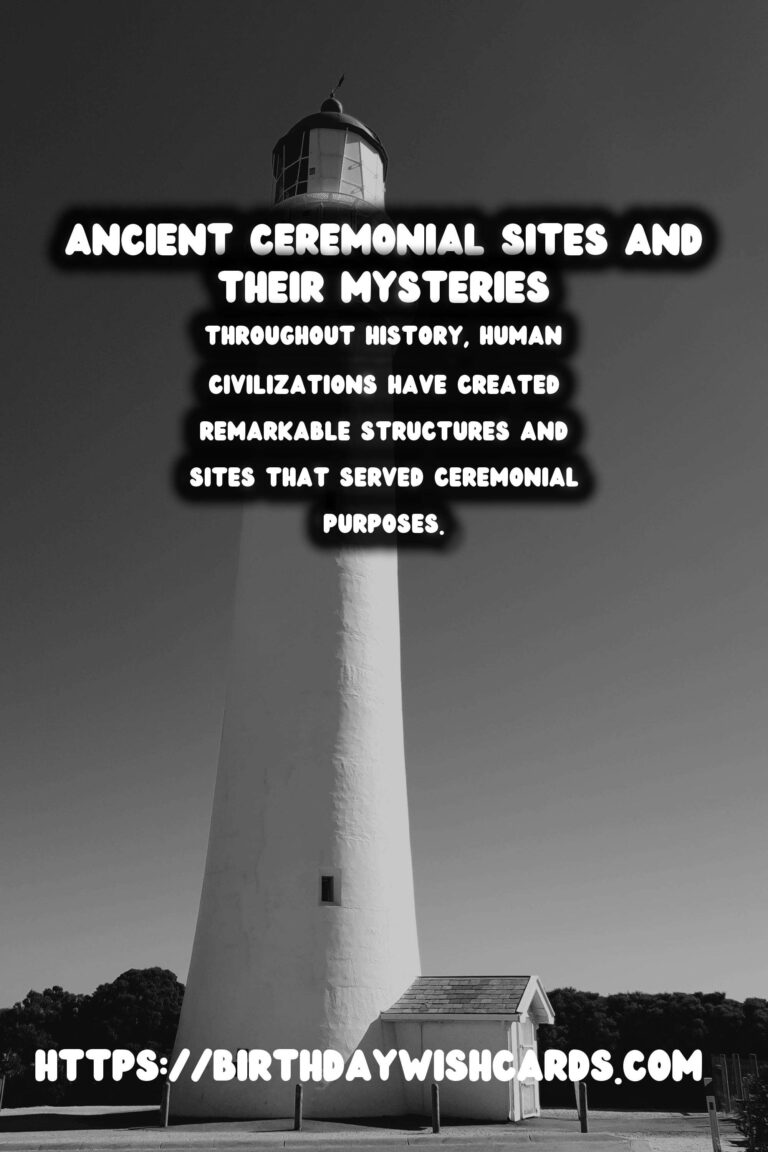
Throughout history, human civilizations have created remarkable structures and sites that served ceremonial purposes. These ancient ceremonial sites are invaluable to understanding the cultural, religious, and social practices of early societies.
The Historical Context of Ceremonial Sites
Ancient ceremonial sites are scattered across the globe, from the towering pyramids of Egypt to the enigmatic stone circles of Britain. Each of these sites tells a unique story about the society that built it and the reasons behind its construction. These sites were often centers of religious activities, political gatherings, and community celebrations.
Many of these sites have been preserved over millennia, providing a glimpse into the past and offering clues to archaeologists and historians seeking to understand the complexities of ancient human societies.
The Purpose of Ancient Ceremonial Sites
The primary purpose of these sites varies depending on the culture and era. However, they commonly served as places of worship, sacrifice, festivals, and celestial observations. In many cases, they were designed to align with certain astronomical events, underscoring the advanced knowledge early humans possessed in terms of astronomy and architecture.
Religious and Spiritual Functions
For many societies, ceremonial sites were sacred spaces where people could communicate with deities or the spiritual realm. These locations might have been considered the home of gods, making them focal points for pilgrimages, prayers, and offerings.
Community and Social Roles
Beyond their spiritual significance, these sites often played a crucial role in community cohesion. They were venues for large gatherings that allowed for social interactions, trade, and the transmission of cultural traditions and stories through generations.
Archaeological Importance
From an archaeological standpoint, ceremonial sites are treasures that provide insights into the technological and artistic achievements of ancient civilizations. Excavations often reveal artifacts that contribute to our understanding of daily life, crafts, and societal organization in historical contexts.
Notable Ancient Ceremonial Sites
Stonehenge
One of the most famous ancient ceremonial sites is Stonehenge in England. Its precise construction and astronomical alignment continue to fascinate researchers. Thought to be a site for both ceremonial and healing purposes, it remains a captivating enigma of prehistoric architecture.
The Pyramids of Giza
The pyramids of Giza in Egypt are monumental achievements that served as tombs for pharaohs. As a part of religious traditions, these structures were believed to facilitate the deceased kings’ journey to the afterlife, demonstrating the strong connection between governance, religion, and architecture.
Machu Picchu
Machu Picchu, nestled in the Andean mountains, is a testament to the engineering prowess of the Inca Empire. Its religious significance is evident in the carefully constructed temples and observatories, seamlessly integrated into the mountain landscape.
Preservation and Modern-Day Relevance
Today, the preservation of ancient ceremonial sites is of utmost importance. They are not only invaluable archaeological resources but also cultural heritage sites that connect us to our past. Organizations worldwide work to protect these sites from natural and human-induced threats, ensuring that future generations can continue to marvel at their significance.
Modern society can learn much from these ancient sites, applying lessons of sustainability, community, and spirituality to contemporary challenges. As such, they remain vital touchstones in the quest to understand human history and evolution.
Conclusion
In conclusion, ancient ceremonial sites are profound symbols of humanity’s quest for meaning and connection with the divine and the universe. Despite the many mysteries that remain, they continue to inspire awe and provide valuable insights into the past.
Throughout history, human civilizations have created remarkable structures and sites that served ceremonial purposes. Ancient ceremonial sites are treasures that provide insights into the technological and artistic achievements of ancient civilizations. 
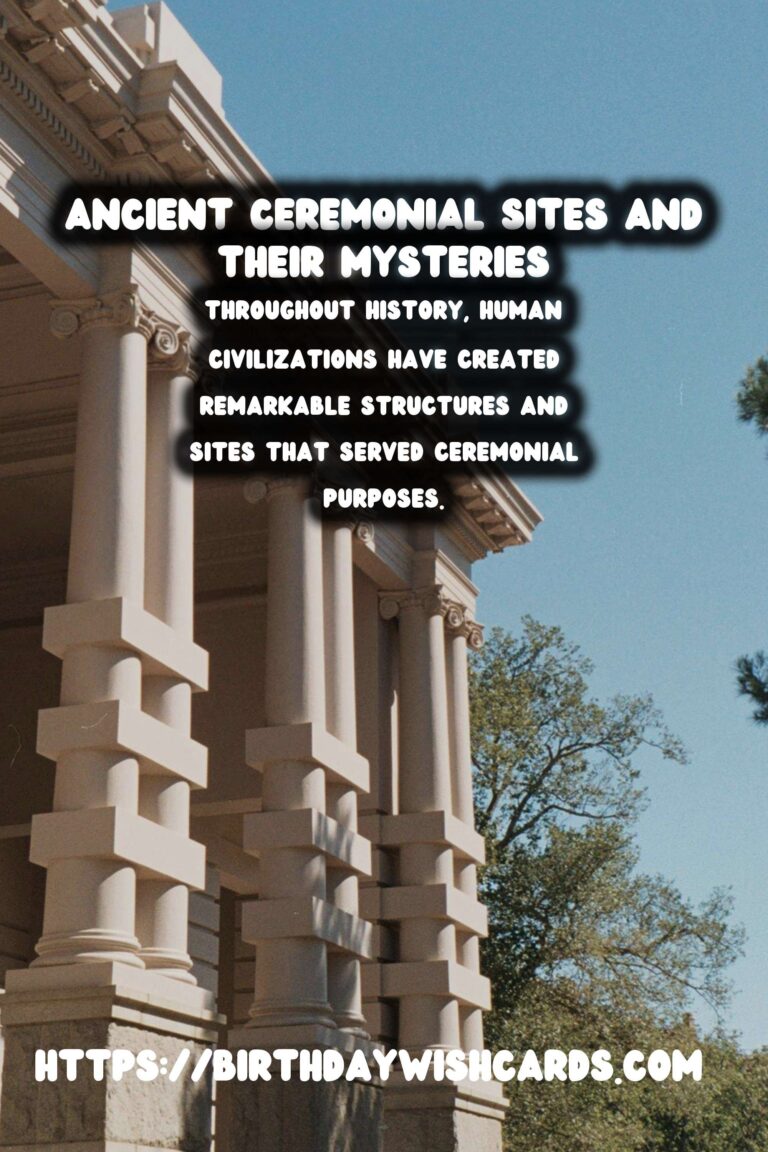
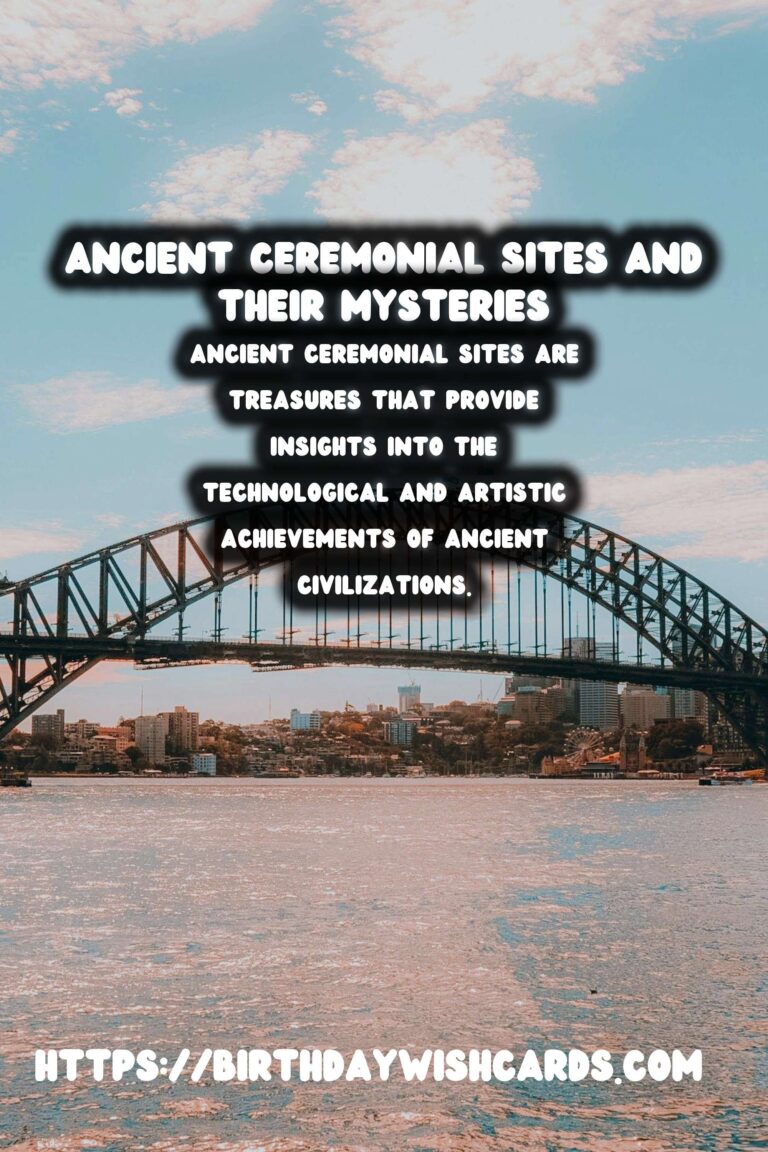
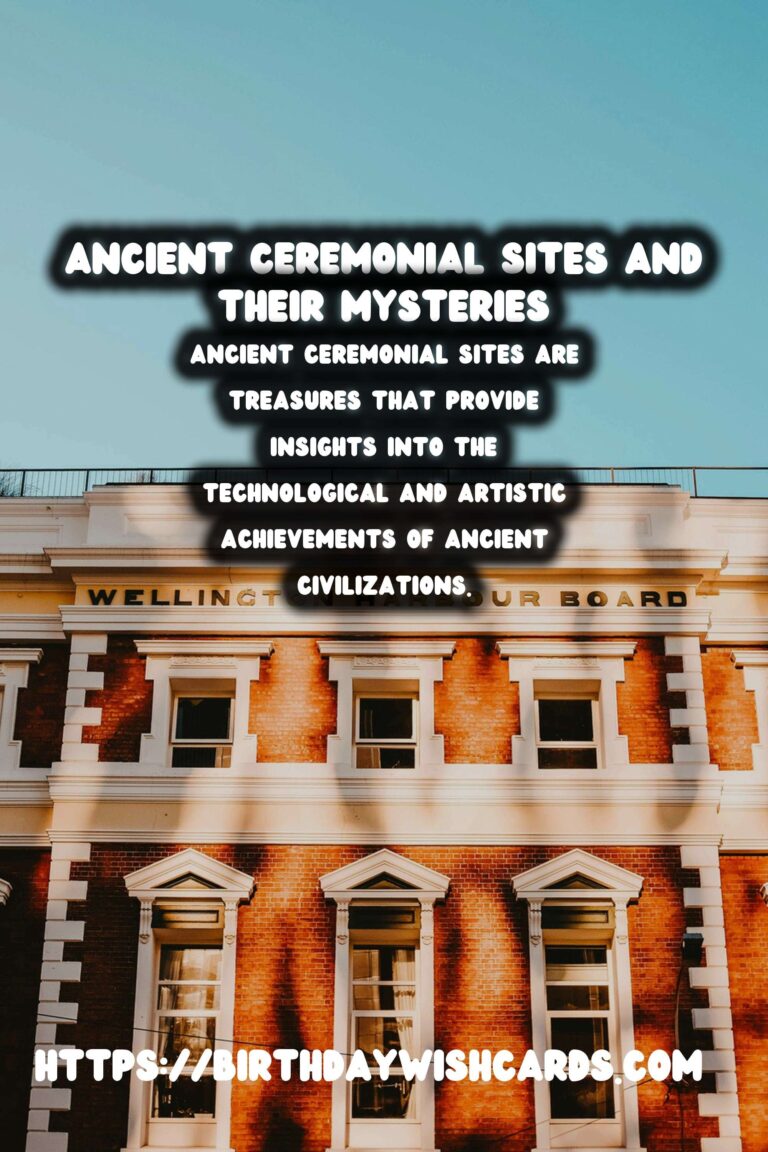
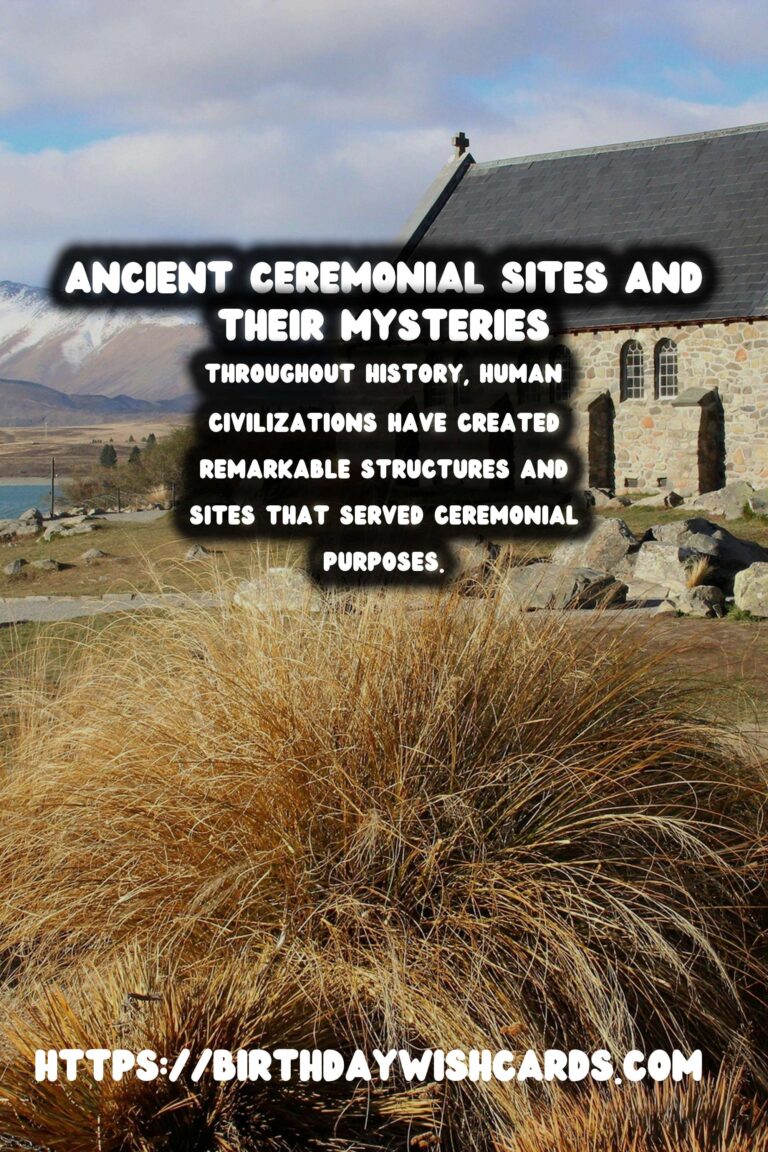
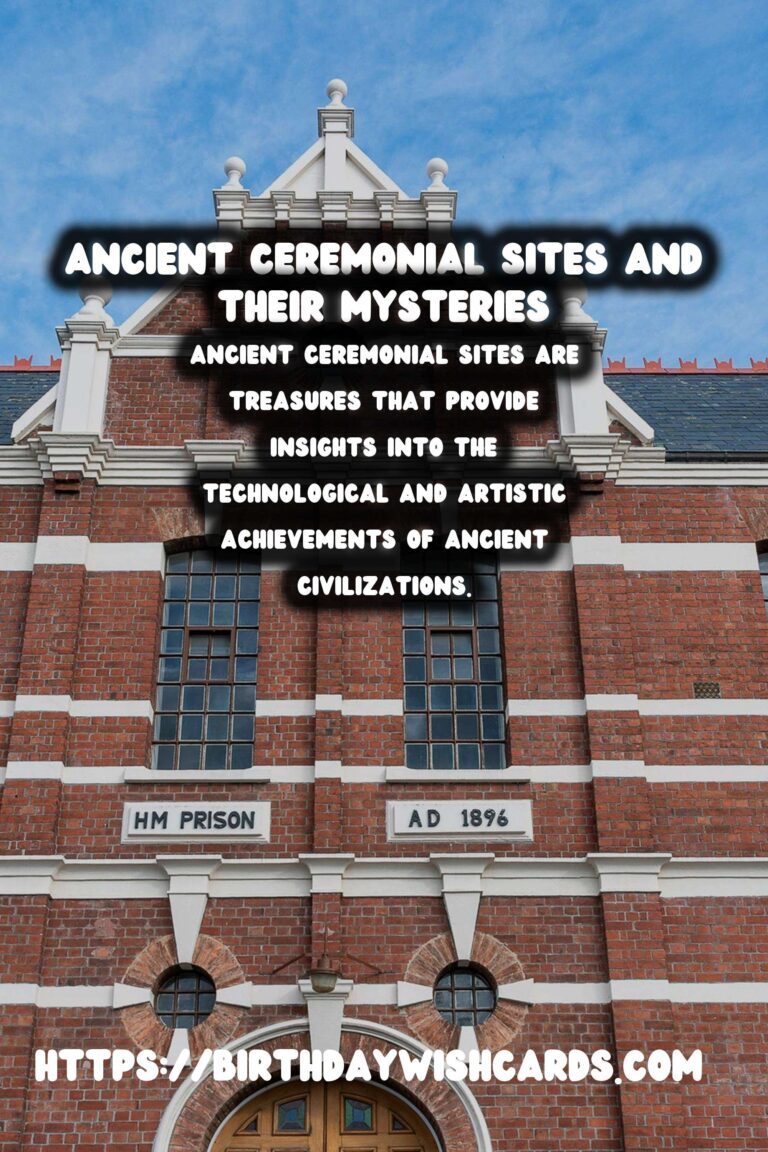



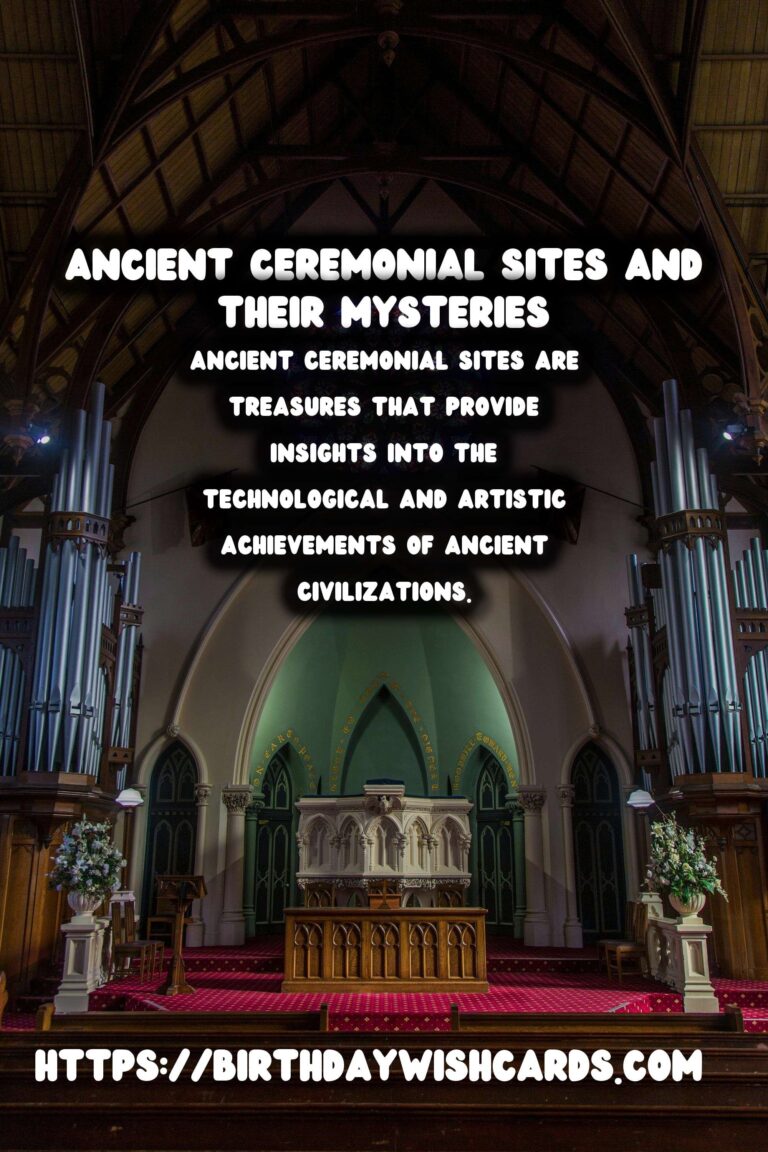
#AncientSites #CulturalHeritage




